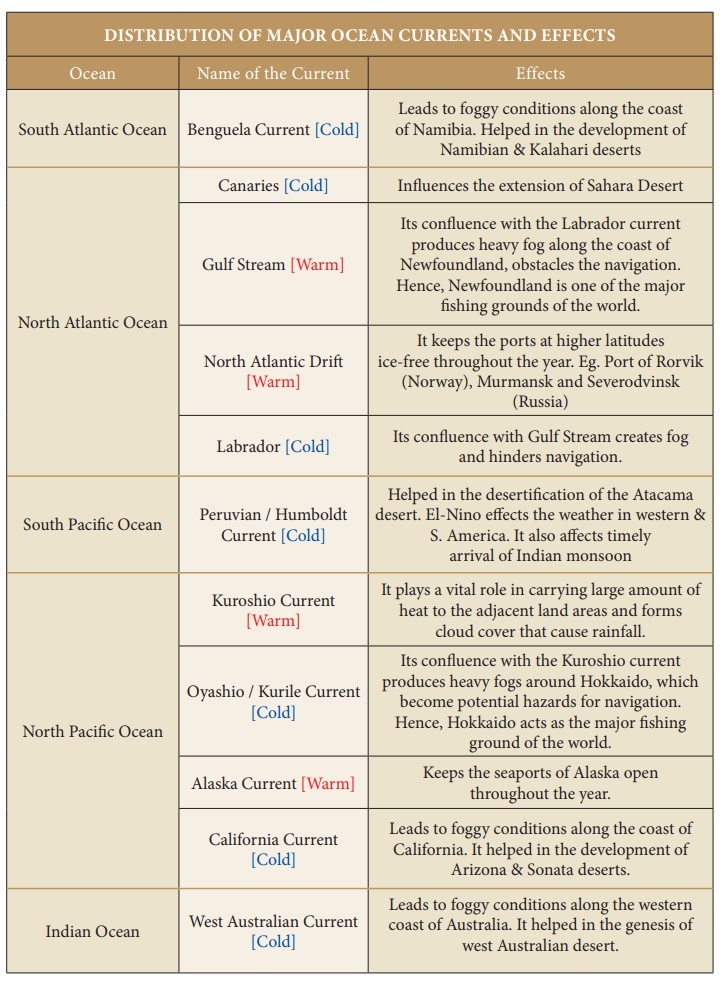Hydrosphere | Geography - Movement of the Ocean Water | 9th Social Science : Geography: Hydrosphere
Chapter: 9th Social Science : Geography: Hydrosphere
Movement of the Ocean Water
Movement of the Ocean Water
The ocean water is
dynamic. Temperature, salinity, density, external forces of the sun, moon and
the winds keep the ocean waters in movement, both horizontally and vertically.
Waves and currents are in horizontal motion while tides have vertical
motion.
(A) Waves
Of all the movements of
the oceans, sea waves are considered to be the strongest. Sea waves are ripples
on water caused when winds blow over the sea. The height of these waves depends
on the speed of wind, its duration and the direction from which they blow.
Sometimes waves are also caused by tremors felt on the ocean floor. Such waves
are quite destructive and called Tsunami.
(B) Tides
The periodic rise and
fall of sea water due to the gravitational pull of the sun and moon on earth
are called tides. They are classified broadly into Spring tides and Neap
tides.
When the Sun, Moon
and Earth are aligned in the same line, the collective gravitation
pull of the sun and moon on earth’s water strengthens to form a high
tide known as spring tide. Such tides always occur on full moon
and new moon days.

When the sun and the moon are at right angles, their gravitational forces work against each other, causing a low tide called neap tide. A neap tide occurs between two spring tides i.e., twice a month, when the first and last quarter moon appears.
(C) Oceans Currents
The movement of oceanic
water on the surface and at the depths in a definite direction is called ocean
current. Ocean currents are in clockwise motion in the northern
hemisphere and in the anti-clockwise motion in the southern hemisphere.
The factors that
generate ocean currents are:
·
Earth’s rotation
·
Prevailing winds and
·
Differences in temperature and salinity of ocean water.
On the basis of
temperature, ocean currents are classified as warm currents and cold currents.
The movement of ocean currents from the low latitudes (tropical zones) towards
high latitudes (temperate and polar zones) is called warm current. Eg. Gulf
Stream in Atlantic Ocean, North Equatorial Current in Pacific Ocean.

The movement of ocean
currents from high latitudes (temperate and polar regions) to low latitudes
(tropical regions) is called cold currents. Eg. Labrador Current in Atlantic
Ocean and Peruvian Current in Pacific Ocean.

Related Topics